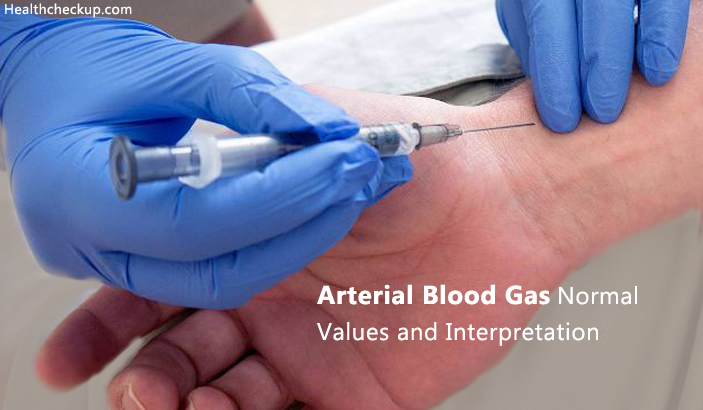What is an Arterial Blood Gas (ABG)?
The Arterial Blood Gas (ABG) is a blood test which measures the pH, Carbon dioxide and Oxygen levels of blood. An arterial blood gas is a simple test, which with the help of numbers, enables your physician to understand how effectively gaseous exchange is occurring in your body. An Arterial Blood Gas is usually advised to patients suffering from respiratory illnesses or under critical care. As a fact, gaseous exchange occurs inside the lungs, at the level of alveoli.
Oxygen is transfused into the blood and Carbon dioxide is diffused outside. Eventually, Carbon dioxide is exhaled outside by the lungs. This normal functioning maintains pH, oxygen, and carbon dioxide levels in circulating blood.
When this process is hampered due to any reason, levels of oxygen or carbon dioxide, or both, become abnormal, resulting in acid-base imbalance or altered pH of blood. This in turn causes other vital organs like the heart and kidneys to act abnormally.
This test plays an important role in determining functions of the vital organs of our body such as the heart, lungs, and kidneys. It helps in deciding treatment plan, to evaluate the effectiveness of oxygen therapy and aids in ventilator management.
How Is The Test Done?
Before drawing blood, the doctor or nurse applies pressure upon the arteries to check for normal flow of blood, this is called the Modified Allen’s Test.
The small amount of blood is drawn into a syringe flushed with Heparin (to prevent blood from clotting), from radial artery (wrist), above the brachial artery (at the elbow) or the femoral artery (groin) or directly from an arterial catheter (if present).
This blood sample is then into the blood-gas analyzing unit. The procedure is slightly painful owing to the surrounding nerves around arteries. Drawing blood may be followed by some extent of bruising over the respective artery. Gentle pressure is applied over the punctured artery to stop blood from oozing out.
Normal values of Arterial Blood Gas
The result of an Arterial Blood Gas Test shows values for pH, Oxygen, Carbon dioxide, Bicarbonates, Lactic acid levels and oxygen saturation. Some ABG results also show hemoglobin and serum electrolyte values.
| pH | 7.35 – 7.45 |
|---|---|
| PaO2 (Partial pressure of oxygen) | 80 – 100 mm Hg |
| PaCO2 (Partial pressure of carbon dioxide) | 35 – 45 mm Hg (4.6 – 6 kPa) |
| HCO3 (Bicarbonate) | 22 – 26 mEq/liter |
| SaO2 (Oxygen saturation) | 95 – 100% |
Interpretation of Results:
- pH < 7.35 – Acidic.
- pH > 7.45 – Alkaline
- PaCO2 > 45 mm Hg – Respiratory Acidosis
- PaCO2 < 35 mm Hg – Respiratory Alkalosis
- HCO3 < 22 mEq/l – Metabolic Acidosis
- HCO3 > 26mEq/l – Metabolic alkalosis
Acidosis: Blood pH Becomes Less than 7.35.
Metabolic Acidosis: A condition where there is excess acid in the bloodstream. This condition occurs when the body is unable to flush out toxins from the body.
Commonly occurs in diabetes, lactic acidosis, renal failure and intoxication of organic acid, isoniazid, ethanol, sulfates and metformin.
Respiratory Acidosis: It is considered to be a medical emergency where, in cases of decreased ventilation, blood pH decreases and carbon dioxide concentration increases. Respiratory acidosis may be acute or chronic.
Alkalosis: Blood pH is More than 7.45
Respiratory Alkalosis: In this condition, due to increased respiration, blood pH increases with reduced levels of carbon dioxide in the blood. It occurs in conditions such as stress, high altitudes, fever, hyperventilation, liver diseases and vocal cord paralysis.
Metabolic Alkalosis: This condition occurs when there is an increase in bicarbonate levels in the blood. It is seen in cases of vomiting and dehydration, from diuretic therapy and so on.
Medically Reviewed By
Dr. Himanshi is a Homoeopathic consultant and currently working as a lecturer in Post-graduate faculty of Homeopathy, Parul University, Vadodara. Completed BHMS and MD in Homeopathy in January 2018 and also has a clinical experience of about 6 years. Personal interests include reading, spending time with family and traveling.








